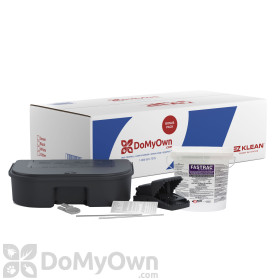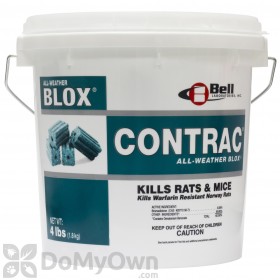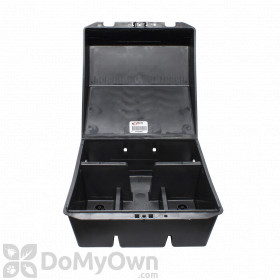How Can I Overcome Failed Rodent Baiting Attempts?

Usually baiting errors are the cause of baiting failures and not resistance.
Be patient--rats are suspicious of new objects and novel foods; therefore, they may not accept a new type of bait until the third or fourth day.
Occasionally, rodents accept bait well and an initial population reduction is successful. Then bait acceptance appears to stop although some rodents remain. In such instances it is likely that the remaining rodents never accepted the bait either because of its formulation or placement. The best strategy is then to switch to a different bait formulation, to place baits at different locations, and/or to use other control methods such as traps.
Rodent Baiting Troubleshooting Tips
Look at the suggestions below to troubleshoot baiting failures.
- Failure to achieve control with anticoagulant baits that are highly accepted: Contrac and Final)
- Baiting time period was too short. Baiting should be continued until rodents stop feeding on bait placements
- Insufficient bait is placed, and none remains from one baiting to the next. There should be enough bait in the station to last from one placement to the next, and placements should be frequent enough to keep bait fresh and attractive to rodents.
- Too few baiting points are used or some are not spaced closely enough together. In some situations, baiting points may have to be within 20-30 feet of one another for rats and as close as 8 feet together feet for mice.
- The control program does not cover a large enough area, permitting rodents to move in from untreated adjacent areas.
- Possible rodenticide resistance. Especially if the same amount of bait is taken daily over several weeks, and there is no appreciable reduction in the rodent population. Rodents usually start appearing with one week.
- Failure to achieve control with anticoagulant baits that are poorly accepted:
- The choice of bait or bait formulation is not attractive to the rodent.
- The bait container is not placed properly or is in an area of too much human activity for the rodent. Try to place stations in areas where rodents are known to travel or harbor.
- Other attractive foods are abundant and easily available to the rodents, and they have no need to switch to a new food. (A common occurrence with rats around zoos, livestock operations, and granaries, and with mice in grocery stores). If possible available alternative foods should be kept in containers to exclude rodents from access. Sanitation is key in these situations, and all food stuffs and liquids should be properly cleaned up and stored each night.
- The bait has become rancid, moldy, insect ridden, or contaminated with insecticide or other odors (cleaning agents, nicotine, etc) which reduces acceptance. Control is best with fresh baits. Exterior baits should be changed on a monthly basis unless the bait is still in excellent condition.
- The quality of the anticoagulant is poor and the rodents can detect the poison in the bait. (This often happens with bait bought from a consumer store).
Fastrac is a non-anticoagulant. The active ingredient is Bromethalin. Bromethalin is the only true "stop feed" rodenticide--once animals obtain a lethal dose, they do not feed again. It is effective against anticoagulant-resistant rodents. Bromethalin causes central nervous system depression and paralysis, leading to death in 2 to 4 days. Bait should be renewed at intervals of several days. Continuous bait availability (as with anticoagulants) is not required, but bait needs to be present long enough to allow all animals in the area to feed. The amount of bait needed is usually about one-third that used with anticoagulants, since an animal ingesting a lethal dose does not feed again. This effect is unlike that of anticoagulants, in which rodents continue to consume bait after they have ingested a lethal dose. Bait shyness has not been reported with this type of product.
NOTE: Bromethalin does not have an antidote available. Although it would be prudent to use this bait in combination with a tamper resistant bait box to avoid any non-targeted animal from ingesting the bait, it would take a large amount of the bait to receive a lethal dose. Secondary poisoning (e.g., a dog consuming the carcasses of rodents poisoned by Fastrac) does not readily occur with Bromethalin.
Related Products
View additional Mouse Control Products
View additional Rat Control Products
Related Articles








